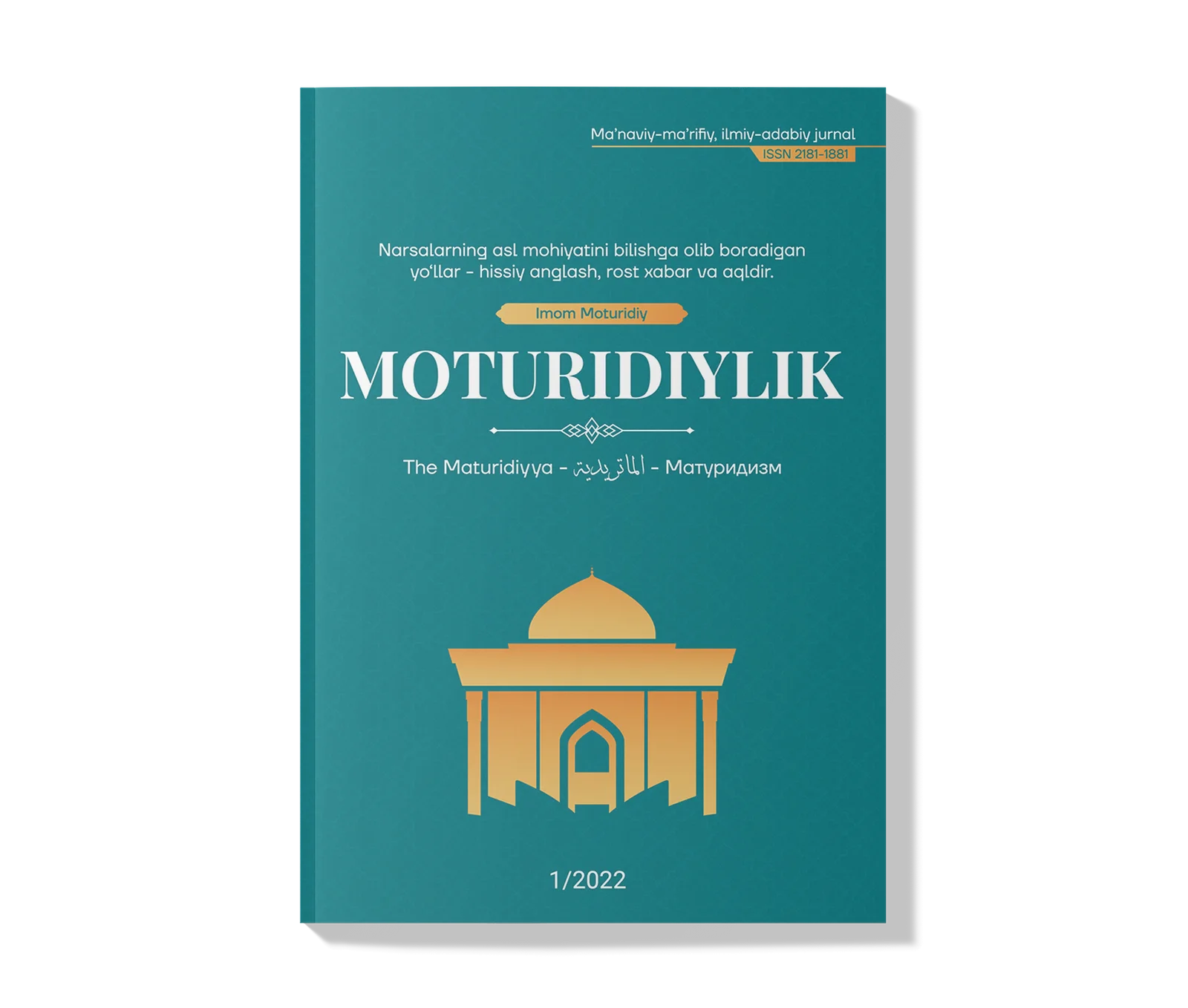THE DEVELOPMENT OF ISLAMIC SCIENCES DURING THE SELJUK SULTAN SANJAR PERIOD
DOI:
https://doi.org/10.47980/MOTURIDIY/2022-2/10Keywords:
Seljuks, Nizamiyya madrasah, Islamic civilization, tafsir, kalam, fiqh, tasawwuf, historyAbstract
n. This article discusses the scholars who worked during the dynasty that ruled under the name of the “Great Seljuk Empire” in the XI-XII centuries, their works, and their greatcontribution to the development of Islamic
civilization. The article also discusses the activities of Nizamiyya madrasahs, which were famous in the middle ages. There are many studies on the scientific and intellectual life of the Seljuk State in the periods of Alp Arslan
and Melikshah. Hovewer, the period of Sultan Sanjar has not been studied as a whole except for a few articles. The enlightenment of the Great Seljuk period reached its peak after Sultan Melikshah during the reign of Sultan Sanjar. Sultan Sanjar himself had surpassed his ancestors in every way in his patronage of science and enlightenment. Although his reign distingueshes with the battles against various misguided sects science also did not cease. On the contrary, the sultan himself sought to create conditions for all the sciences in the kingdom. With the need arising from
this situation, it is aimed to examine the scientific and intellectual structure of the Sultan Sanjar period with this study. During the reign of Sultan Sanjar, the scholars in the geography of Khorasan and Mawarannahr (Transoxania), their works, studies, innovations, and intellectual life will be examined. Within the framework of the scientific environment provided by Sultan Sanjar and his contributions to Islamic civilization, the point where the Seljuks brought the scientific heritage they took over and how they achieved this will be analyzed.
References
Imam adz-Dzahabi. (1958). Tadzkirah al-huffadz. Haidarabad: Dairah al-ma’rifah al-Uthmaniya.
Imam adz-Dzahabi. (1996). Siyar A’laamin Nubalaa’ (Т. 18). Beirut: Ar-Risalah.
S.Agadjanov. (1991). Государство Сельджукидов и Средняя Азия в XI–XII вв. Moscow: Наука.
Yaqut al-Hamawi. (1993). Mu’jam al-Udabā. Beirut: Dar al-gharb al-islamiy.
Ibn Asir. (1987). Al-Kamil fi at-tarikh (Т. 8). Beirut: Dar al-kutub al-ilmiya.
Carl Brockelmann. (1937). Geschichte der arabischen Litteratur. Leiden: E.J.Brill.
Richard Bulliet. (1972). The particians of Nishapur. Cambridge: Harvard University Press.
H.G.Raverty. (1873). The Tabakat-i-Nasiri of Minhaji-Siraj. London: Gilbert and Rivingtov.
Ibn Is’fandiyor. (2002). History of Tobaristan. Cairo: Majlis al-a’la lis-saqofah.
Haji Khalifa. (2016). Kashf al-zunun. Baghdad: Maktabah al-masna.
Ibn Khallikan. (2007). Wafayāt al-Aʿyān (Т. 1). Beirut: Dar as-sadr.
Ibn Khallikan. (2007). Wafayāt al-Aʿyān (Т. 3). Beirut: Dar as-sadr.
Ibn Khallikan. (2007). Wafayāt al-Aʿyān (Т. 5). Beirut: Dar as-sadr.
Nevzat Kosoglu. (1991). Turk dunyasi ve Turk medeniyeti uzerine dusunceler. Istanbul: Otuken yay.
Ahmed ibn Mahmud. (1977). Selcukname (Т. 1). Istanbul: Bilge kultur Sanat.
Ali Öngül. (2003). Selçuklularda Eğitim Faaliyetleri ve Yetişen İlim Adamlarına Genel Bir Bakış. Celal Bayar Üniversitesi Sosyal Bilimler Enstitüsü Dergisi, 67-78.
Ali ibn Sulaiman Rowandi. (2005). Rokhat as-sudur wa ayat as-surur fi tarikh ad-dawlah as-saljuqiyya. Cairo: Al-Majlis a’laa li-s-saqofah.
B.Rozenfeld, A.Yushkevich. (1965). Omar Khayyam. Moscow: Наука.
Sama’aani. (1977). Al-Ansaab (Т. 2). Beirut: Dor aljunun.
V.V.Bartold. (1998). Тюрки. Двенадцать лекций по
истории турецких народов Средней Азии. Moscow: Наука.
Downloads
Submitted
Published
How to Cite
Issue
Section
License
Copyright (c) 2025 Mumin Mirzo Abdupattaev (Author)

This work is licensed under a Creative Commons Attribution-NonCommercial 4.0 International License.


















